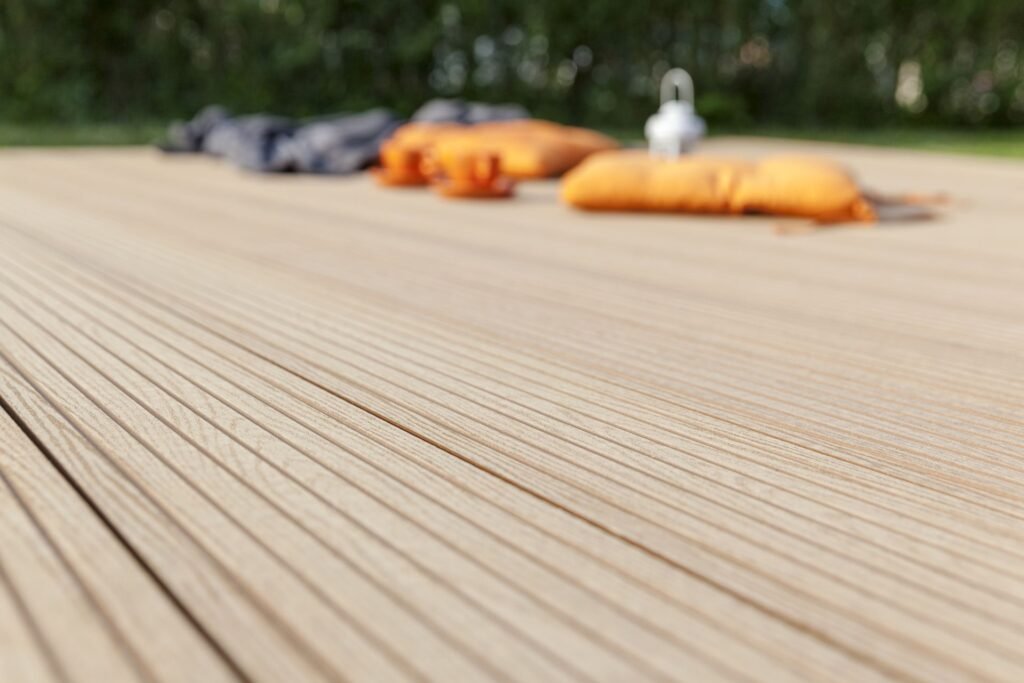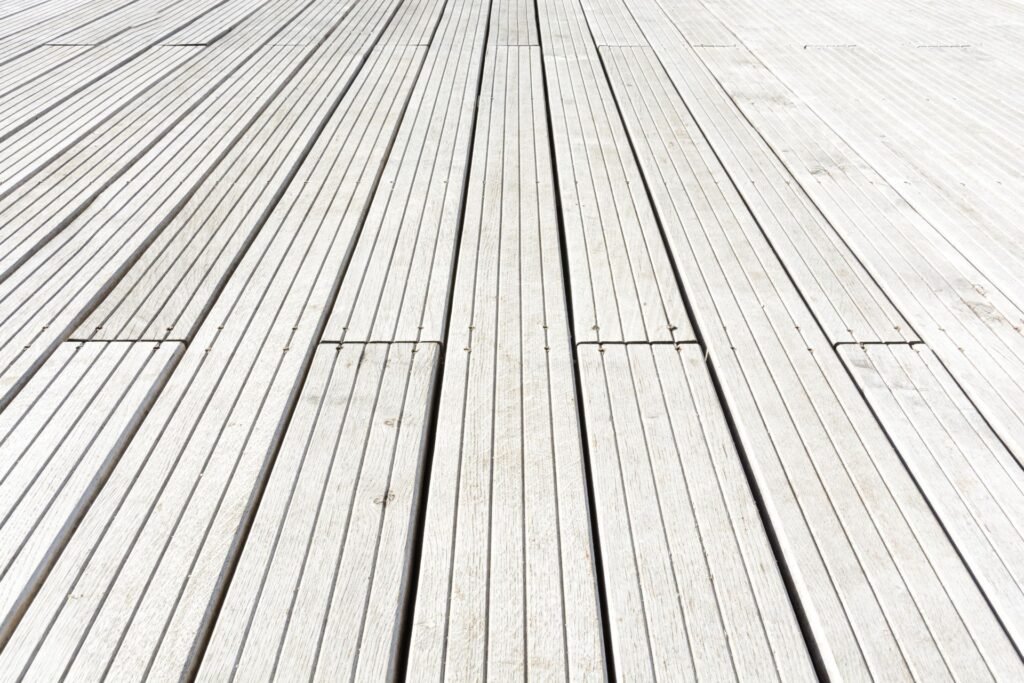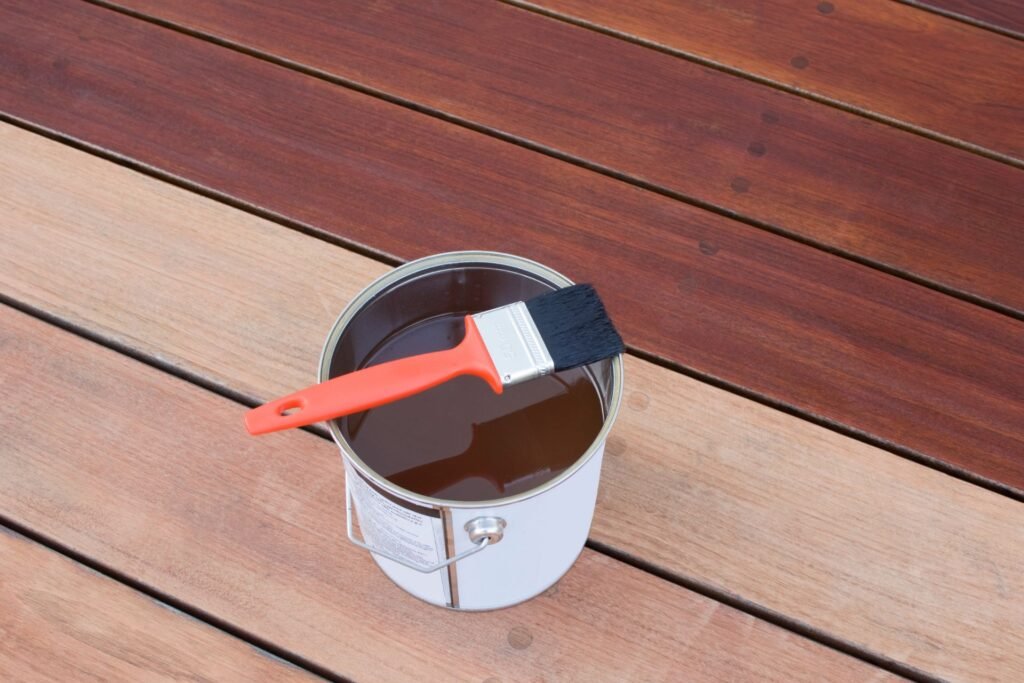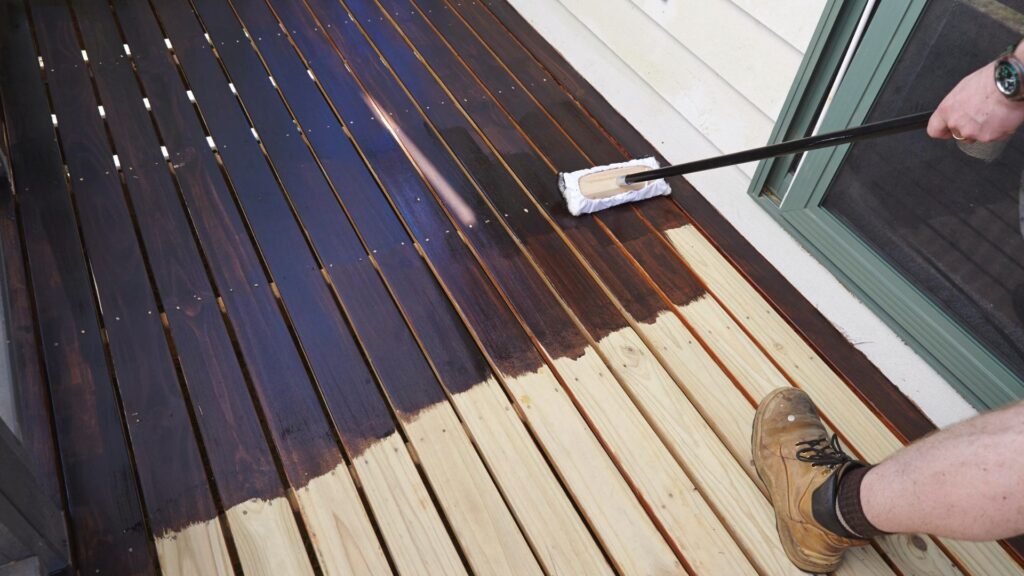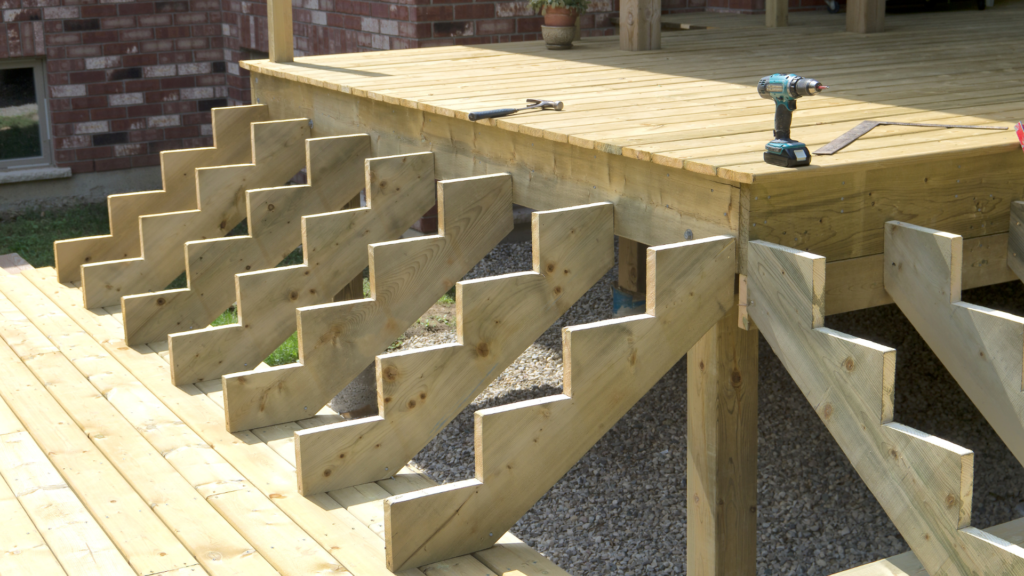Ultimate Guide To What Is Composite Decking
Welcome to the versatile world of composite decking, a popular choice in the realm of home improvement for its durability and aesthetic versatility. In this comprehensive guide, we’ll explore everything you need to know about composite decking, from its basic definition to its varied applications. Whether you’re planning to revamp your outdoor living space or simply curious about alternative decking materials, this article will provide valuable insights into what composite decking is, its benefits and drawbacks, and how it compares to traditional wood decking. By the end of this read, you’ll be well-equipped with all the information necessary to decide if composite decking is the right choice for your home renovation project.
Composite decking is a durable and low-maintenance alternative to traditional wood decking, made from a blend of wood fibers and recycled plastics. It offers a variety of colors and finishes, mimicking natural wood without the need for regular staining or painting. This decking material is known for its resistance to fading, staining, scratching, and mold, making it a popular choice for outdoor spaces. Composite decking not only enhances the aesthetic appeal of your home but also contributes to sustainability through the use of recycled materials. Ideal for homeowners looking for a long-lasting and environmentally friendly option, composite decking ensures a beautiful outdoor area with minimal upkeep.
Understanding Composite Decking
Composite decking has become a popular choice among homeowners and builders looking to enhance outdoor living spaces with durability and aesthetic appeal. In this section, we will explore what composite decking is, the materials used in its construction, and trace its development over the years.
Definition of Composite Decking
Composite decking refers to a building material used primarily in the construction of outdoor decks and patios. Unlike traditional wood decking, composite decking combines wood fibers with plastic materials, resulting in a product that mimics the look of wood while offering enhanced durability and lower maintenance requirements.
What is Composite Decking?
Composite decking is a man-made product designed to offer the beauty of wood without intensive maintenance. It is made from a blend of wood fibers and recycled plastics, such as polyethylene or polyvinyl chloride (PVC). This combination of materials helps to protect the decking from the elements, resist fading, staining, and mold, and reduces the likelihood of splintering and rotting, which are common issues with pure wood decks.
Materials Used in Composite Decking
The primary materials used in the production of composite decking include:
Wood fibers: These are typically sourced from wood by-products like sawdust, chips, and wood fiber. Using these materials promotes the reuse of wood waste, making composite decking an environmentally friendly option.
Plastics: Recycled plastics are used, which not only reduces the amount of waste going to landfills but also enhances the moisture-resistant properties of the deck. The plastic components can vary, but common types include high-density polyethylene (HDPE) and polyvinyl chloride (PVC).
History and Development
Composite decking has a relatively recent history, having been introduced in the late 20th century as a solution to some of the drawbacks associated with wood and plastic decking materials.
Brief History of Composite Decking
The concept of composite decking originated in the 1980s to create a more durable and maintenance-free alternative to traditional wood decking. The initial versions of composite decking were a combination of recycled plastics and wood fibers. These early products offered improved durability over wood but were prone to color fading and aesthetic issues like a less natural look.
Evolution Over the Years
Over the years, advancements in technology and materials science have significantly improved the quality and appeal of composite decking. Modern composite decks feature enhanced color retention, better mimicry of natural wood grains, and improved structural integrity. Manufacturers have also introduced a variety of color and texture options, giving consumers more choices to match their personal style and home aesthetics.
Composite decking continues to evolve, with newer generations focusing on eco-friendly manufacturing processes and further enhancements in durability and appearance. This has made it an increasingly popular choice for those looking to create beautiful, long-lasting outdoor spaces with minimal environmental impact.
By understanding the basics and history of composite decking, homeowners can make informed decisions about whether this innovative decking material is the right choice for their outdoor living needs. Whether you are renovating an old deck or building a new one, composite decking offers a blend of beauty, durability, and sustainability that few other materials can match.
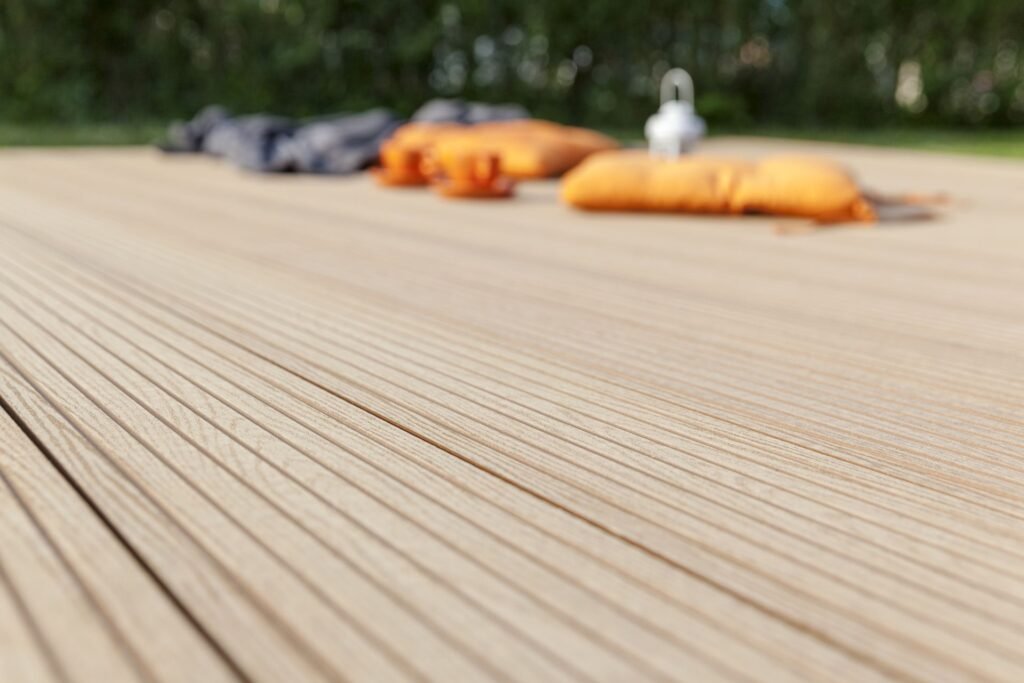
Benefits Of Composite Decking
When it comes to choosing decking materials, homeowners and builders often weigh the pros and cons of composite versus traditional wood decking. Composite decking offers significant advantages, especially in terms of durability, maintenance, and aesthetics. Here’s a detailed look at why composite decking could be the right choice for your outdoor spaces.
Durability and Longevity
One of the primary benefits of composite decking is its durability and longevity. Unlike traditional wood, composite materials are designed to withstand the elements, making them an ideal choice for nearly any climate.
Weather Resistance: Composite decking is highly resistant to weather conditions including rain, snow, and intense sun. The composition of these materials means they do not warp, crack, or swell like wood can under similar conditions. This resilience makes composite decking a long-term investment for homeowners looking for reliability in all weather conditions.
Pest and Rot Resistance: Unlike natural wood, composite decking does not succumb to damage from pests such as termites or carpenter ants. It is also resistant to rot and decay caused by moisture, which is often a significant problem with traditional wood in humid or rainy environments. This resistance helps ensure that your deck remains both sturdy and safe over the years.
Low Maintenance
Another compelling reason to choose composite decking is the low maintenance requirement. This feature is particularly appealing to those who want a beautiful outdoor space without the labor-intensive upkeep.
No Need for Staining or Painting: One of the most time-consuming aspects of traditional wood decking involves staining or painting, which must be done every few years to maintain its appearance and durability. Composite decking, on the other hand, retains its color and finish without the need for regular upkeep, saving time and money in maintenance costs.
Aesthetics and Variety
When it comes to the look and feel of your deck, composite decking offers a wide range of options that can match or enhance any home’s exterior.
Variety of Colors and Textures: Composite decking comes in a myriad of colors and textures, some of which mimic the natural grain of wood without the inherent flaws of natural products. This variety allows homeowners to customize the appearance of their decks to perfectly complement their home’s style.
Aesthetic Appeal: The sophisticated appearance of composite decking, combined with its resemblance to natural wood, lends an elegant and cohesive look to outdoor spaces. Unlike wood, which can vary in appearance due to natural imperfections, composite materials offer consistency in color and quality, ensuring that the aesthetic appeal lasts without fading or staining over time.
In conclusion, composite decking stands out as a superior choice for many homeowners due to its durability, low maintenance requirements, and variety of aesthetic options. Whether you’re renovating an old deck or building a new one, composite materials offer a compelling array of benefits compared to traditional wood decking. This makes it a smart investment for those looking to enhance their outdoor living space with a durable, attractive, and easy-to-maintain decking solution.
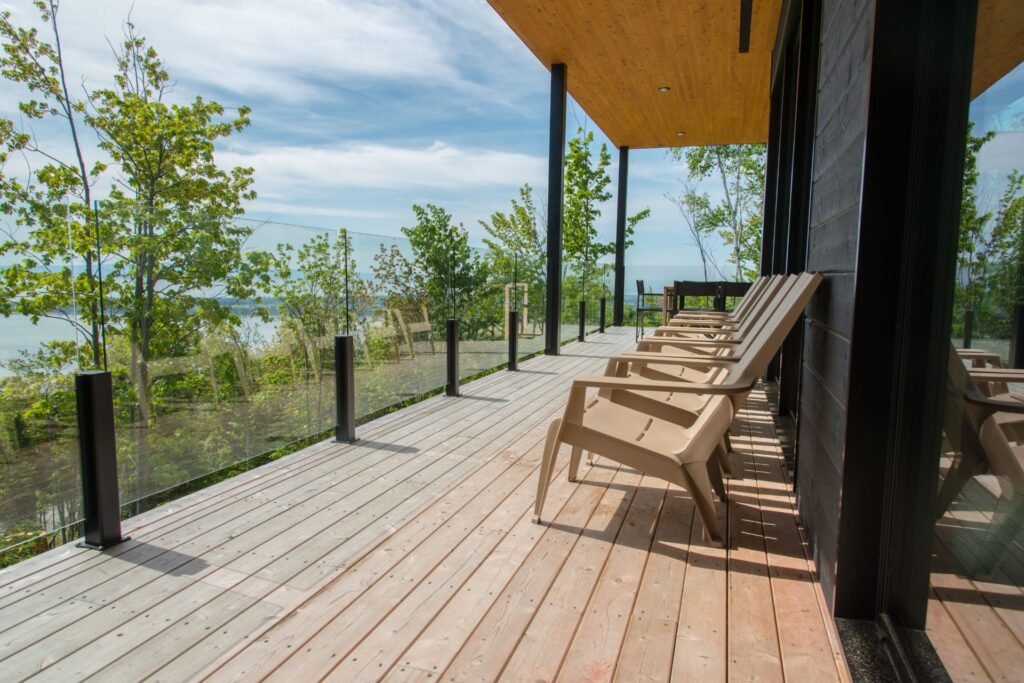
Drawbacks Of Composite Decking
Composite decking offers a modern alternative to traditional wood decking with its blend of wood fibers and plastics. However, it’s essential to understand that while it presents numerous benefits, there are also some drawbacks. These drawbacks, including the initial cost, heat retention, and limitations in repair and color fading, are crucial for homeowners to consider when choosing decking materials.
Initial Cost of Composite Decking
One of the primary concerns when opting for composite decking is the initial investment required. Compared to traditional wood decking, composite materials tend to be more expensive upfront. This higher cost can be attributed to the manufacturing process, which involves combining wood fibers and recycled plastics to create a product that lasts longer and requires less maintenance than natural wood. While this cost might be a deterrent for some, it’s important to consider the long-term savings in maintenance costs. Unlike wood, composite decking does not require staining, sealing, or sanding, which can add up financially over the years.
Heat Retention of Composite Decking
Another significant aspect to consider is the heat retention properties of composite decking. In areas where the summer temperatures are high, composite decking might not be the most comfortable choice. The materials used in composite decking tend to absorb and retain heat more than natural wood. This means that during hot days, the surface of your deck could become uncomfortably warm underfoot, making it less ideal for barefoot walking or lounging. If your deck area receives a lot of direct sunlight, this is a critical factor to keep in mind when making your choice.
Repair and Color Fading in Composite Decking
Lastly, the potential for color fading and the difficulty in repairing damages are significant drawbacks of composite decking. Over time, exposure to sunlight and weather elements can cause the vibrant color of composite decks to fade, leading to a more muted appearance. Unlike wood, which can be sanded down and refinished, composite materials do not allow for easy repairs or alterations. If damage occurs, such as deep scratches or gouges, the affected area can be difficult to fix without replacing entire boards. This limitation can add to the long-term maintenance costs and affect the overall aesthetics of the decking.
While composite decking is an excellent option for durability and low maintenance, homeowners need to weigh these drawbacks against their specific needs and circumstances. Understanding these limitations—initial cost, heat retention, and repair and color fading—helps in making an informed decision that aligns with both budget and lifestyle requirements. When chosen wisely, composite decking can offer a beautiful, lasting addition to any outdoor space, but like any material, it comes with its set of considerations.

Installation And Maintenance
Composite decking is a popular choice for homeowners looking to enhance their outdoor spaces. Its durability and low maintenance requirements make it an attractive alternative to traditional wood decking. In this guide, we will explore the key aspects of installing and maintaining composite decking to ensure long-lasting beauty and functionality.
Installation Process of Composite Decking
1. Pre-installation Planning: Before beginning the installation, it’s crucial to plan the layout of your deck. Measure the area to determine how much decking material is needed and inspect the condition of the underlying structure to ensure it is sound and level.
2. Choosing the Right Materials: Select high-quality composite decking boards that suit your aesthetic preferences and functional needs. Additionally, purchase the appropriate fasteners, typically special composite deck screws or hidden clip systems that are specifically designed for composite materials.
3. Installing the Deck: Installation should ideally be done by professionals to ensure the best results. Here are the general steps involved:
- Foundation Preparation: Prepare a sturdy foundation, ensuring that the ground is level and stable.
- Joist Installation: Install the joists at the appropriate spacing as per the manufacturer’s instructions. This is crucial as improper joist spacing can lead to sagging boards or weakened deck structure.
- Decking Installation: Lay the decking boards, securing them to the joists with the chosen fasteners. Be mindful of the spacing between boards to allow for thermal expansion and contraction.
- Finishing Touches: Finish the edges of the deck and install any additional features like railings or steps according to your design preferences.
4. Professional Installation: Hiring a professional installer can be advantageous. Professionals have the necessary experience to handle unexpected issues that may arise during installation and can ensure that the decking is installed according to best practices and manufacturer specifications.
Maintenance Tips for Composite Decking
1. Routine Cleaning: Regular cleaning is essential to maintain the appearance and longevity of your composite deck. Sweep it regularly to remove dirt and debris, and clean up any spills as soon as they happen to prevent stains.
2. Deep Cleaning: Periodically, you should perform a more thorough cleaning. Use a soap and water solution or a cleaner specifically designed for composite decking. Avoid using harsh chemicals that can damage the deck surface.
3. Handling Stains and Scratches: If your composite decking gets stained, refer to the manufacturer’s recommendations for suitable cleaning products. For scratches, some products may allow for light sanding, but always check the manufacturer’s guidelines.
4. Avoid Damaging Practices: Do not use metal shovels or tools to remove snow and ice as they can scratch the deck surface. Also, avoid placing hot items directly on the decking as it can cause melting or marking.
5. Regular Inspections: Annually inspect your deck to ensure that all components, like fasteners and supports, are in good condition. This helps in addressing any issues before they become major problems, ensuring safety and durability.
By following these guidelines, you can enjoy a beautiful and durable composite deck for many years. Remember, while composite decking is low maintenance, it is not no maintenance. Regular care and professional installation are key to maximizing the longevity and beauty of your investment.

Environmental Impact
When considering eco-friendly building materials for outdoor spaces, composite decking often comes into the conversation. This section delves into the environmental impact of using composite decking, focusing on its composition, the use of recycled materials, and its overall sustainability. This analysis aims to provide homeowners, builders, and designers with a clear picture of why composite decking can be a responsible choice for environmentally conscious construction projects.
Composition of Composite Decking
Composite decking is designed to offer the look and feel of natural wood without the high maintenance that traditional wood requires. It is typically made from a blend of wood fibers and plastics, which can include polyethylene (PE) or polyvinyl chloride (PVC). This combination not only utilizes waste products, such as wood chips and sawdust but also incorporates recycled plastics, which helps reduce the amount of waste going to landfills.
Use of Recycled Materials
One of the most compelling environmental benefits of composite decking is its use of recycled materials. The plastics used in composite decking often come from post-consumer or post-industrial sources, including items like recycled milk jugs, shampoo bottles, or plastic bags. By repurposing these materials, composite decking manufacturers help divert waste from landfills, which is a crucial step towards a more sustainable production model.
The wood content in composite boards typically comes from remnants of lumber mills, including wood chips, shavings, and sawdust, which are byproducts that would otherwise be considered waste. This efficient use of materials not only reduces environmental impact but also enhances the sustainability of the building material industry.
Sustainability Aspects
In addition to using recycled materials, composite decking offers several other sustainability benefits that make it an environmentally friendly choice:
Durability: Composite decking is highly durable and resistant to fading, staining, and scratching. This longevity means that it doesn’t need to be replaced as often as traditional wood decking, which reduces the demand for raw materials and energy consumption over time.
Low Maintenance: Unlike wood decking, composite materials do not require regular staining, painting, or sealing. This reduces the need for potentially harmful chemicals that can be detrimental to the environment.
End of Life: At the end of its lifecycle, composite decking can often be recycled again, further reducing its environmental footprint.
Composite decking represents a robust eco-friendly option in building materials due to its use of recycled materials and sustainability features. For consumers looking to make environmentally responsible choices, composite decking offers a durable, low-maintenance, and sustainable alternative to traditional wood decking. Builders and homeowners who choose composite materials are contributing to a more sustainable construction landscape, which is vital in the fight against climate change and environmental degradation.

How To Choose The Right Composite Decking
Selecting the perfect composite decking for your outdoor space involves careful consideration of various factors to ensure durability, aesthetic appeal, and cost-effectiveness. This detailed guide will walk you through essential aspects to consider, helping you make an informed decision tailored to your needs and preferences.
1. Budget Considerations
Before diving into the myriad options available in composite decking, it’s crucial to determine your budget. Composite decking varies significantly in price, influenced by quality, brand, and additional features like UV protection or texture enhancements. Setting a budget early helps narrow down choices to those within your financial comfort zone without compromising on quality. Remember, investing in higher-quality composite decking can offer longer durability and less maintenance, which might save money in the long run.
2. Climate Compatibility
Your local climate plays a pivotal role in selecting the right type of composite decking. Materials react differently under various environmental conditions such as extreme temperatures, humidity, and exposure to sunlight. For instance, in areas with high moisture levels, opt for composite decking with mold-resistant properties. Similarly, for sunny regions, choosing a decking material with UV protection will prevent fading and heat retention, ensuring the deck remains comfortable and maintains its color consistency over time.
3. Aesthetic Preferences
Composite decking comes in a wide array of colors, textures, and finishes. Whether you’re looking for a modern, sleek look with a single color or a classic appearance mimicking natural wood grains, there’s a variety of options to suit your style. Consider the overall design of your home and landscape to select decking that complements your existing aesthetics. Visual harmony between your decking and home exterior enhances curb appeal and increases property value.
4. Choosing the Right Type and Brand
With the market flooded with numerous brands and types of composite decking, making the right choice can be overwhelming. Here are a few tips to guide you:
Research Brands: Look into reputable brands known for quality and customer satisfaction. Check online reviews and testimonials to gauge previous customers’ experiences.
Material Quality: Examine the composition of the decking material. High-quality composites contain a higher percentage of wood fibers and high-density polyethylene, which offer better durability and a more natural look.
Warranty and Support: Opt for brands that provide substantial warranties and excellent customer support. A good warranty can be a testament to the quality and durability of the product.
Eco-friendliness: If sustainability is a concern, check how eco-friendly the decking material is. Some composites are made entirely from recycled materials, making them an excellent choice for environmentally conscious homeowners.
5. Installation and Maintenance
Understanding the installation process and ongoing maintenance requirements of composite decking is essential. Some decking options feature easy, snap-together installation, which can be more cost-effective if you’re considering a DIY project. On the other hand, consider the long-term maintenance needs. Composite decking typically requires less maintenance than traditional wood decking but checking what specific care each brand and type of decking needs will prevent future problems.
Choosing the right composite decking involves balancing budget, climate suitability, aesthetic preferences, and practical considerations such as installation and maintenance. By thoroughly researching and considering these factors, you can select a decking solution that not only meets your needs but also enhances the beauty and functionality of your outdoor space.

FAQs: About What Is Composite Decking
Conclusion
In conclusion, this article has comprehensively explored the various facets of composite decking, highlighting its durability, maintenance ease, and aesthetic versatility compared to traditional wood decking. As you weigh your options for outdoor decking, consider how these benefits align with your lifestyle and maintenance preferences. Composite decking could be the perfect solution for enhancing your outdoor space with minimal upkeep. Take a moment to reflect on your specific needs and how this innovative decking option might meet them, potentially transforming your outdoor living experience.
About the Author:
Mike Veail is a recognized digital marketing expert with over 6 years of experience in helping tradespeople and small businesses thrive online. A former quantity surveyor, Mike combines deep industry knowledge with hands-on expertise in SEO and Google Ads. His marketing strategies are tailored to the specific needs of the trades sector, helping businesses increase visibility and generate more leads through proven, ethical methods.
Mike has successfully partnered with numerous companies, establishing a track record of delivering measurable results. His work has been featured across various platforms that showcase his expertise in lead generation and online marketing for the trades sector.
Learn more about Mike's experience and services at https://theleadguy.online or follow him on social media:


